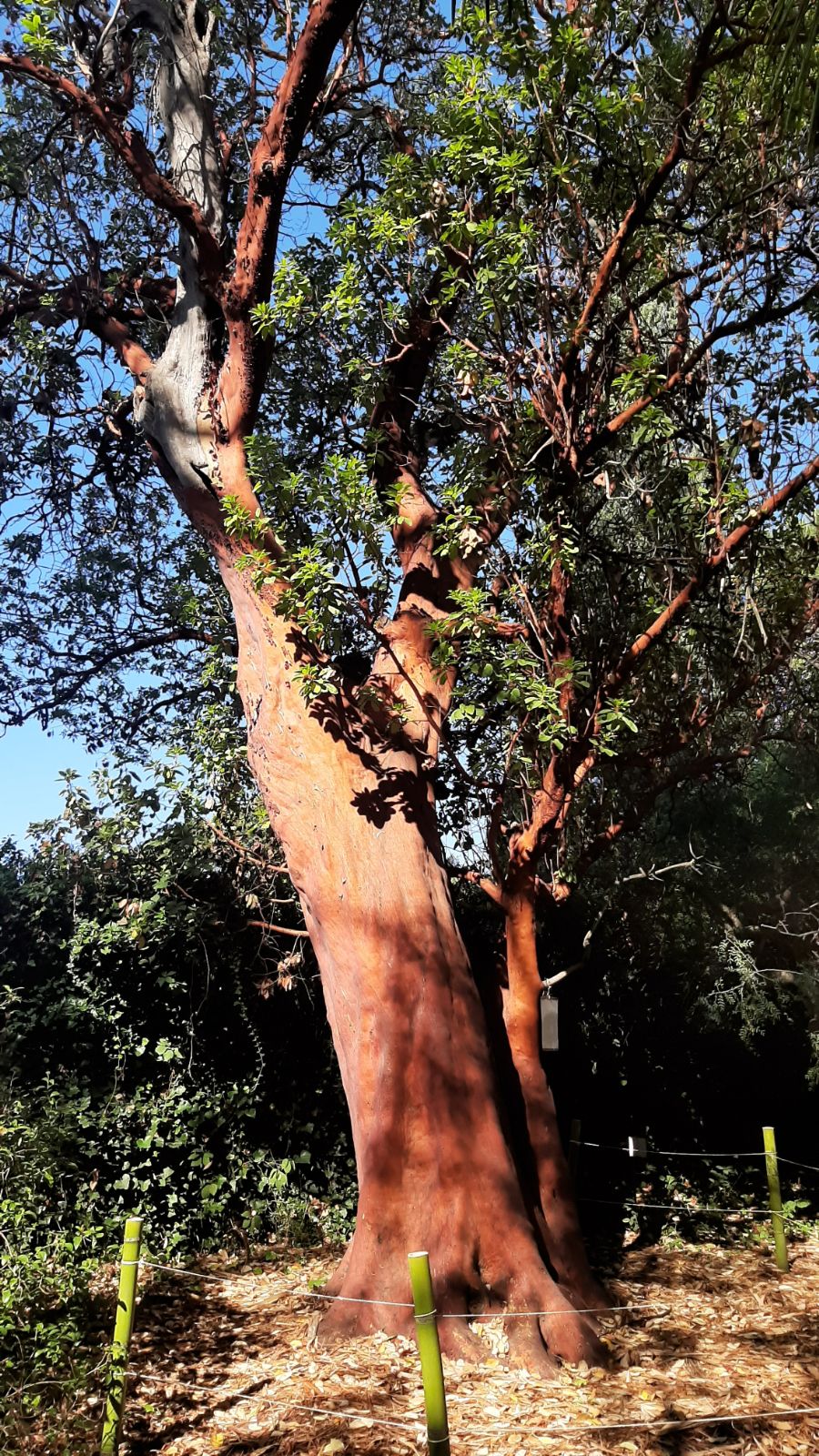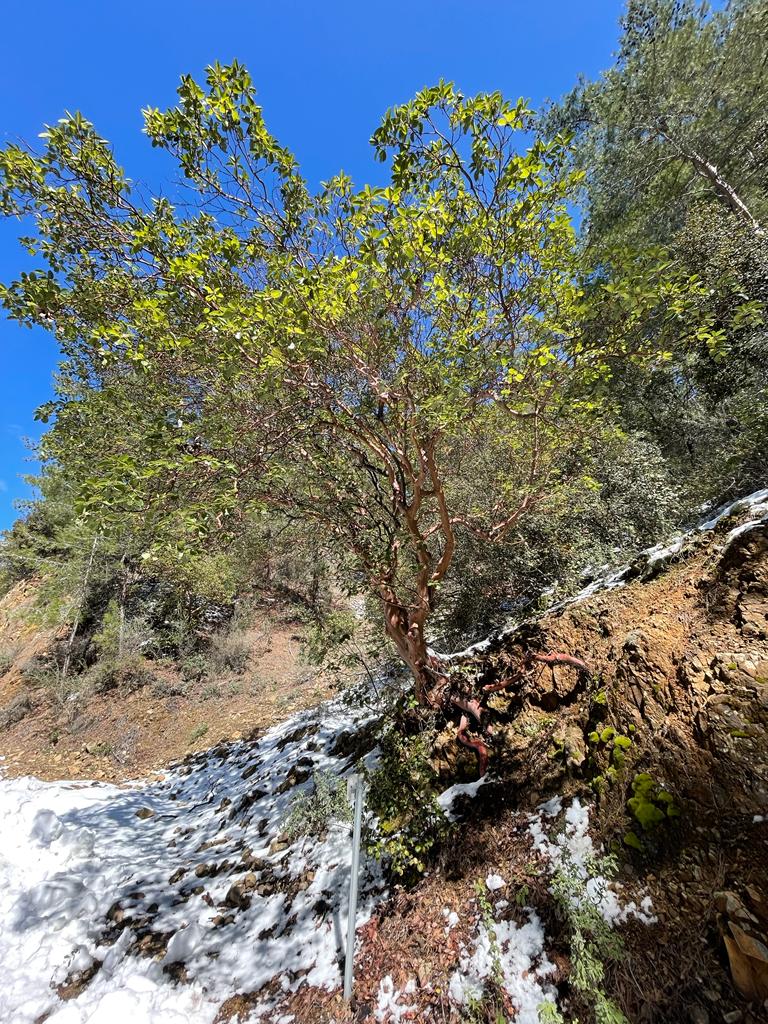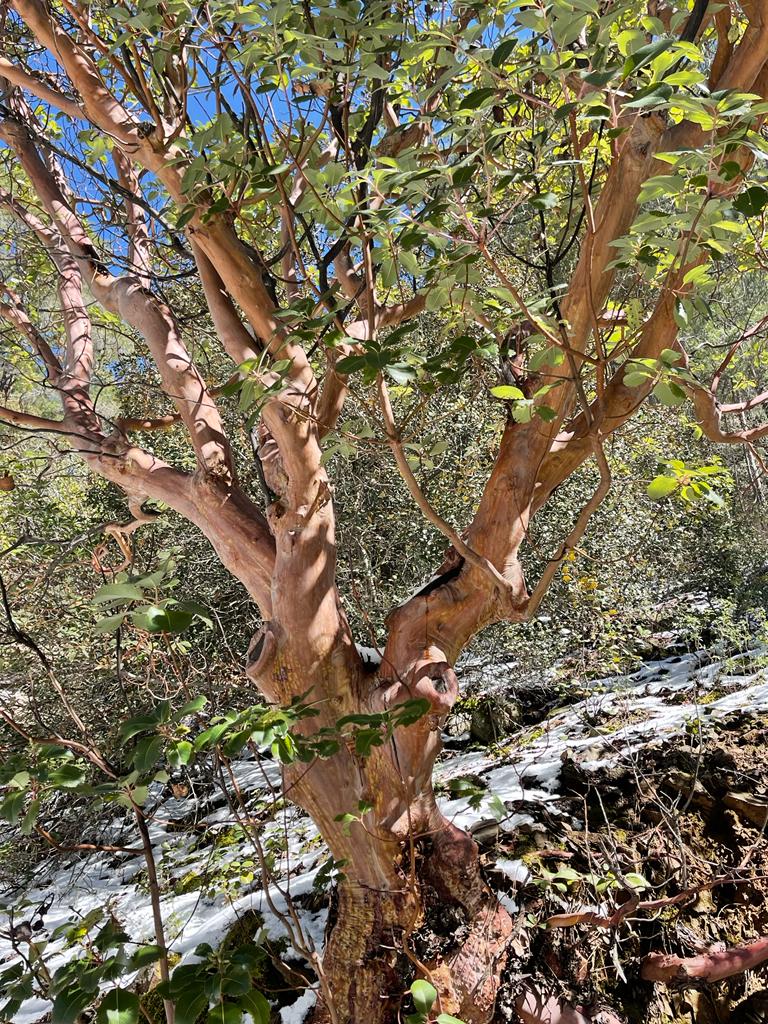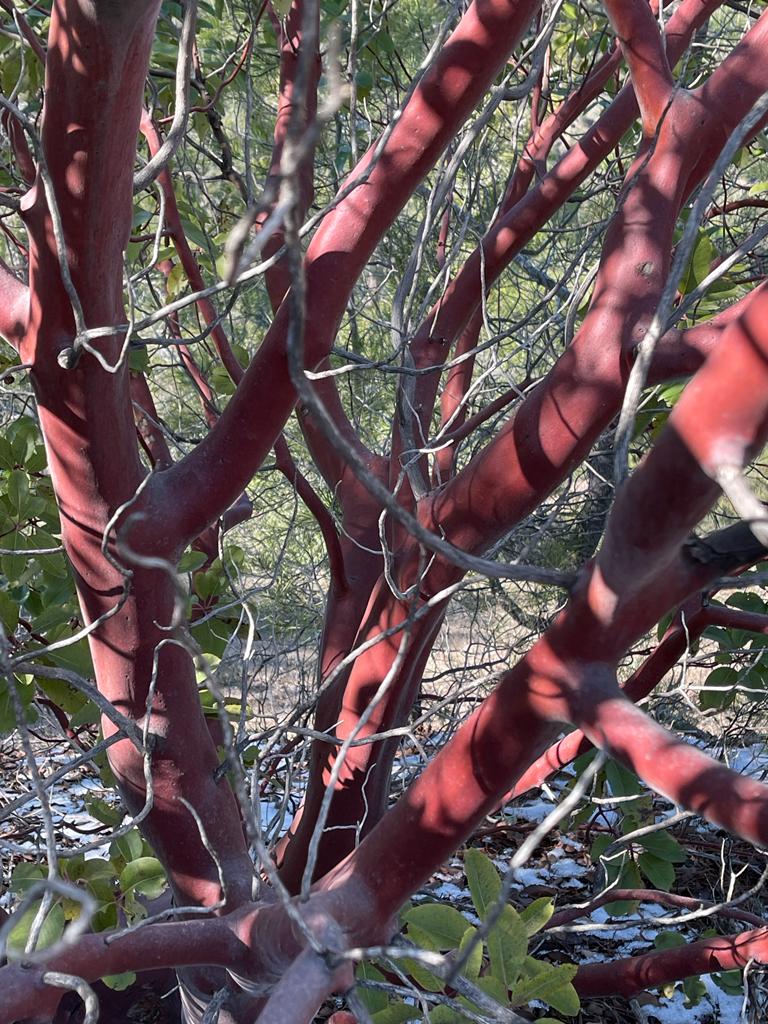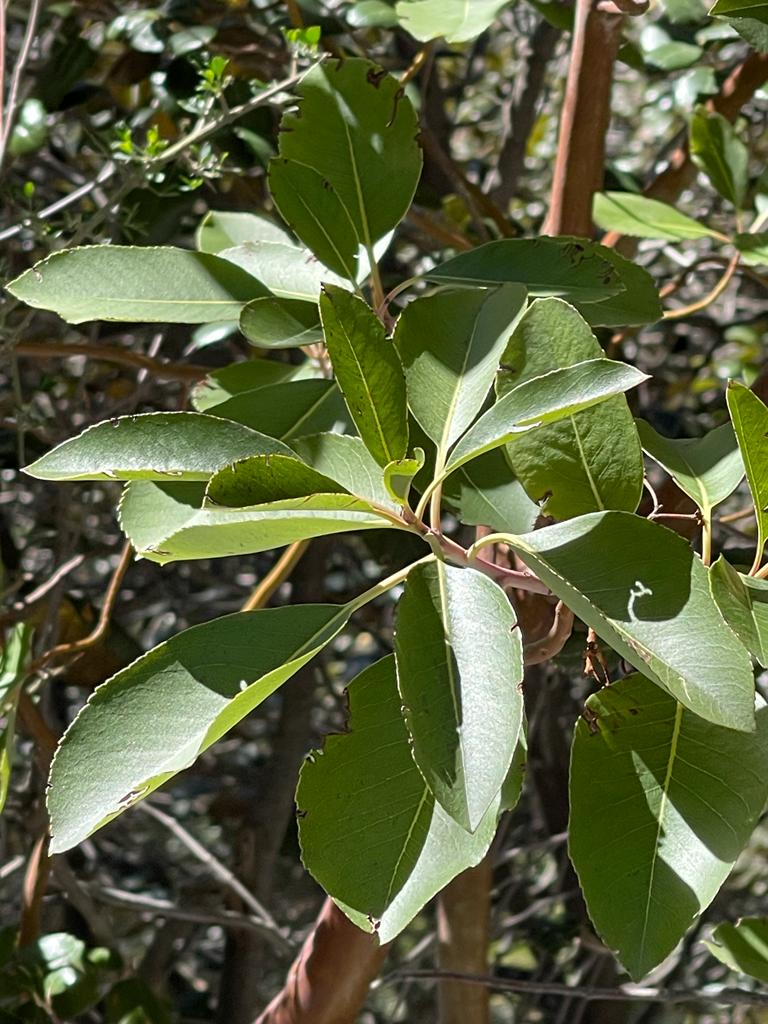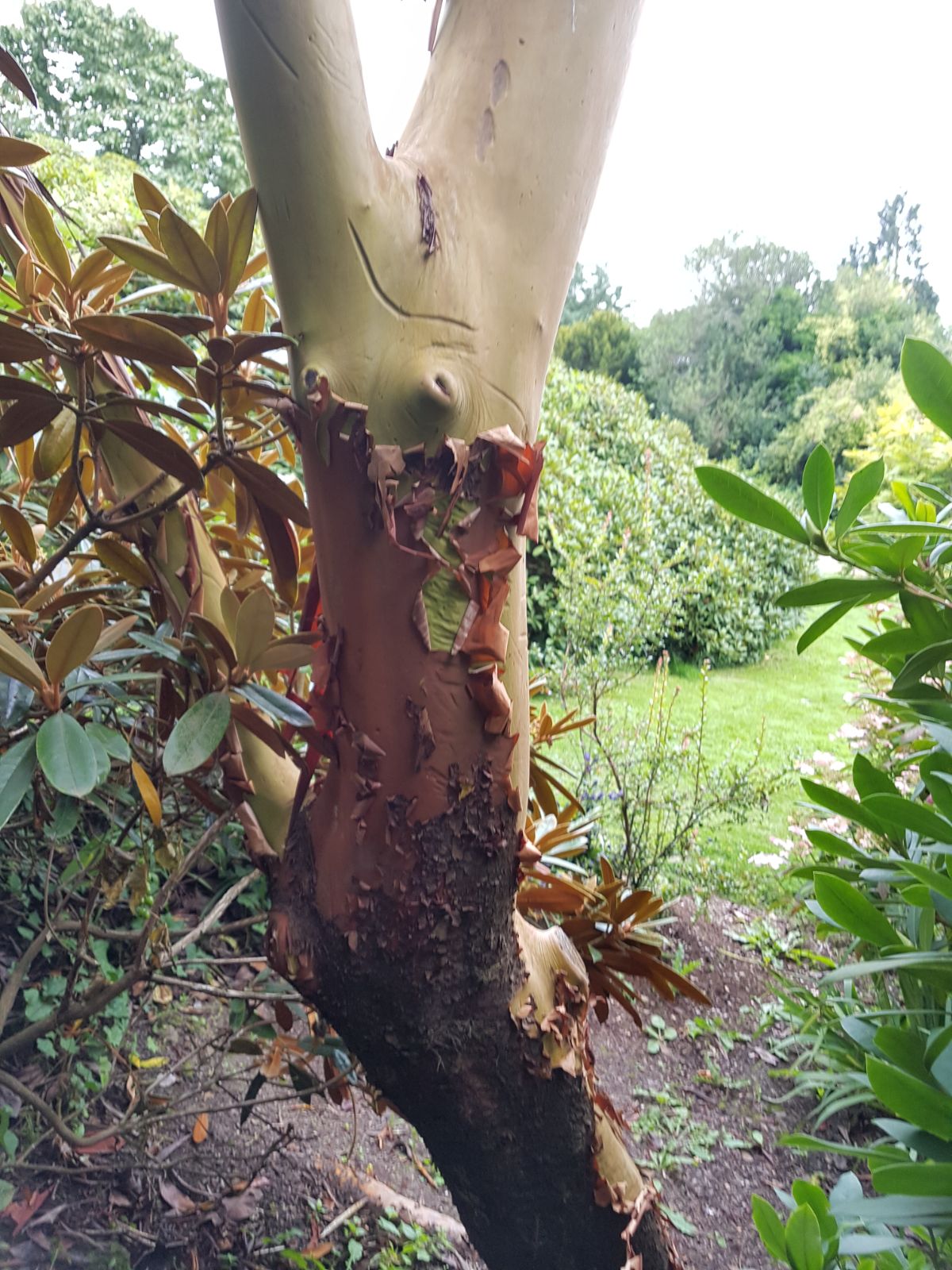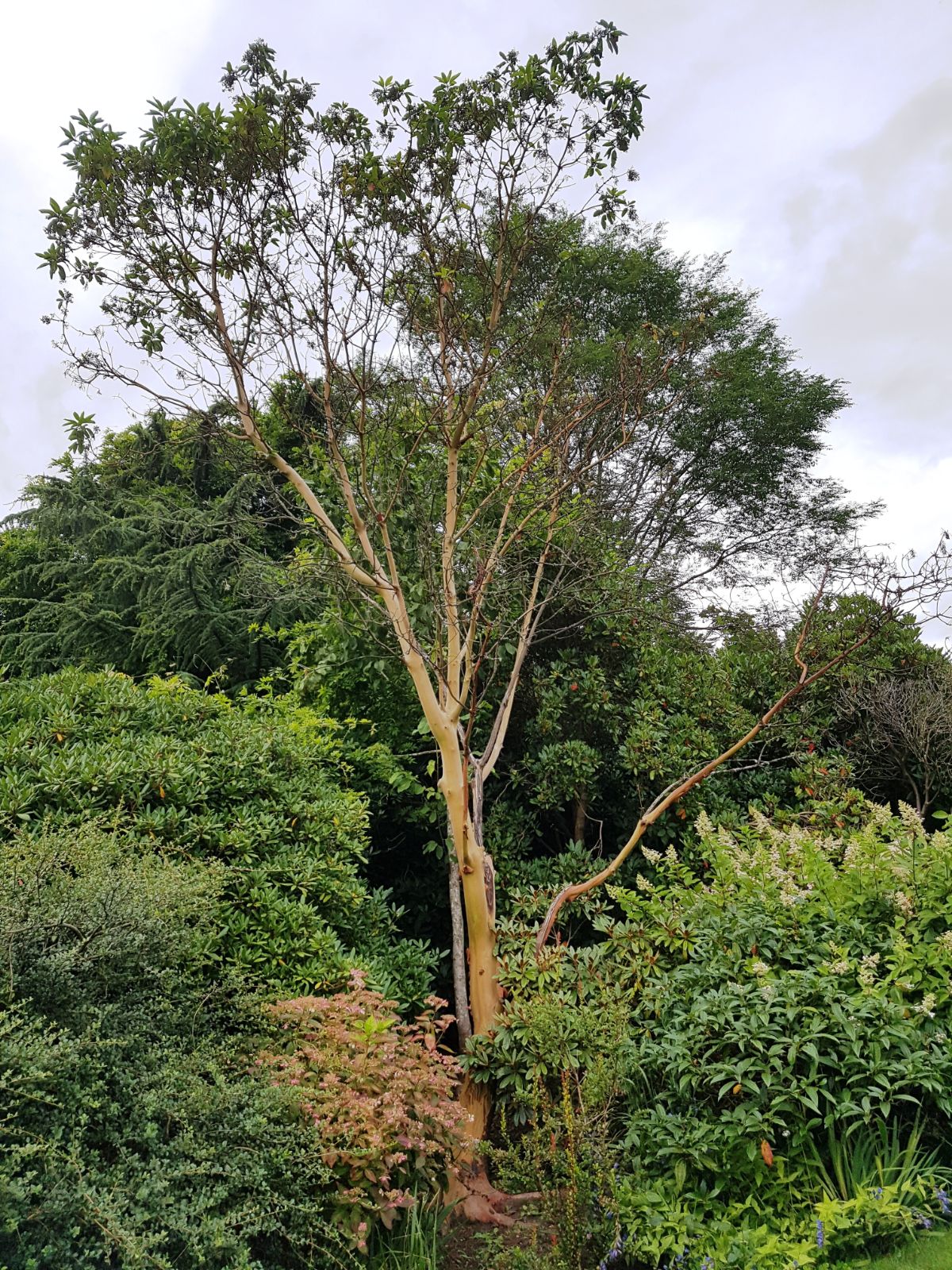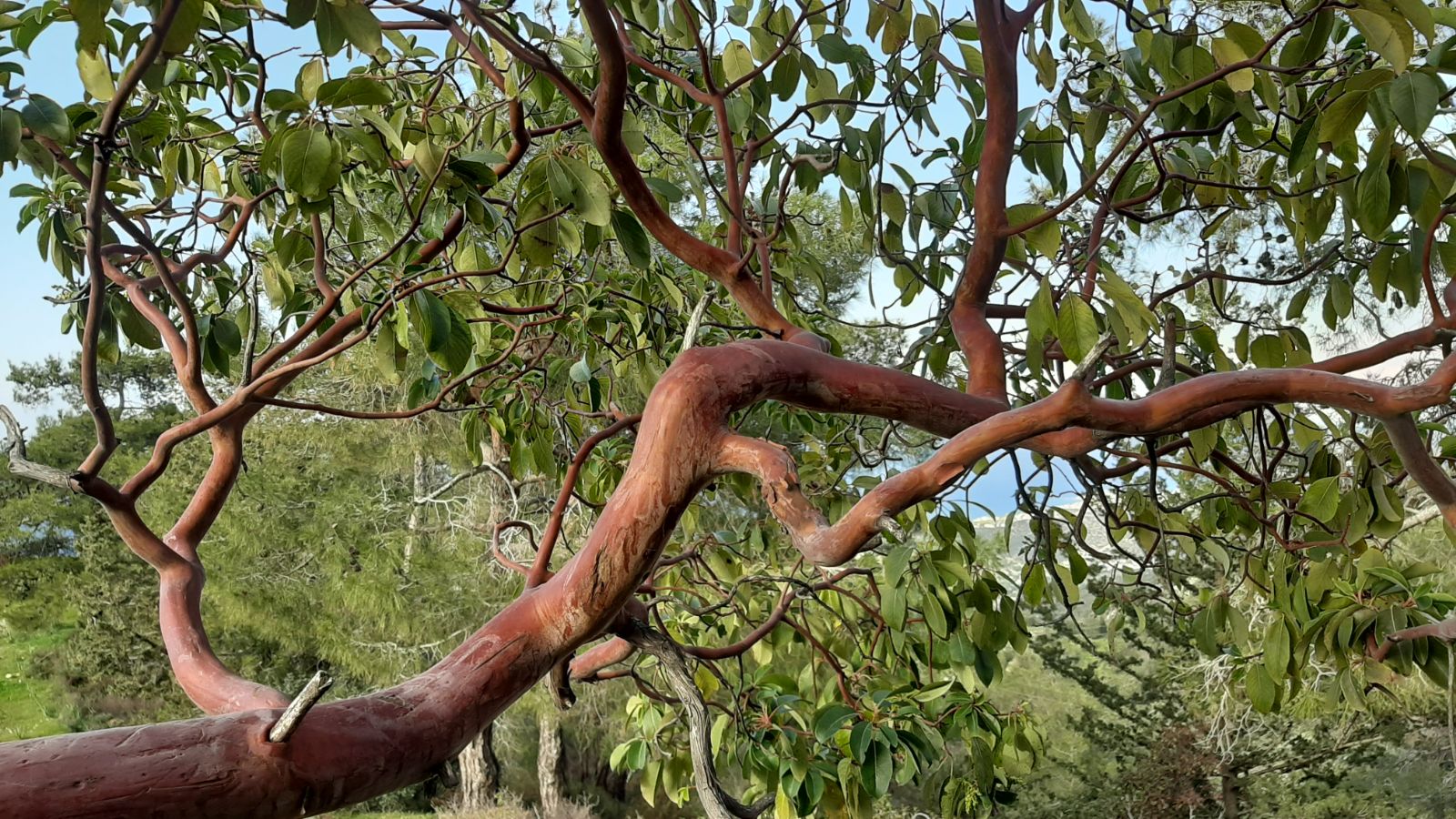Arbutus andrachne
Sponsor
Kindly sponsored by
a member of the International Dendrology Society
Credits
Julian Sutton (2021)
Recommended citation
Sutton, J. (2021), 'Arbutus andrachne' from the website Trees and Shrubs Online (treesandshrubsonline.
Genus
Common Names
- Greek Strawberry Tree
Shrub or small tree to 12 m, typically multistemmed from a thick base. Bark orange-red, smooth, peeling in papery strips; young branchlets glabrous. Leaves ovate to oblong, up to 10 × 3–6 cm, less than twice as long as wide, margins usually entire or somewhat serrate on vigorous young shoots, dark green above, paler beneath, glabrous; petiole 15–30 mm. Inflorescence an erect, terminal, many-flowered panicle with hairy major axes and pedicels; pedicels lengthening to about 5 cm in fruit. Corolla urceolate, to 7 mm, whitish; ovary hairy; flowering in spring or early summer (March-April, UK). Fruits rounded, 8–12 mm across, the surface marked with a web of grooves, but smoother than in A. unedo, ripening orange red in autumn. (Tutin et al. 1972, Bean 1976, Huxley et al. 1992, Cullen et al. 2011).
Distribution Albania Armenia Azerbaijan Bulgaria Croatia a few Adriatic islands Cyprus Georgia Greece mainland, Crete, East Aegean Islands Israel Jordan Lebanon North Macedonia Syria Turkey Ukraine southern Crimea, very local
Habitat Forests and shrublands, usually on rocky slopes on acidic soils; 0–1500 m.
USDA Hardiness Zone 8-9
RHS Hardiness Rating H4
Conservation status Least concern (LC)
The Greek Strawberry Tree can make a characterful, spring-flowering specimen with peeling, orange-red bark. However, it has proved less hardy in our area than A. unedo, especially when young (Edwards & Marshall 2019), and on both sides of the Atlantic many cultivated trees labelled A. andrachne turn out to be its hybrid A. × andrachnoides (Bean 1976, Jacobson 1996), which is probably a better tree for general planting outside of Mediterranean areas, despite its tending to produce fewer flowers and fruits.
Arbutus andrachne was named by Linnaeus in Systema Naturae (1759), six years after his publication of A. unedo in Species Plantarum; the name andrachne is taken from an Ancient Greek plant name reputedly applied to the strawberry. Today these two remain the only widespread Old World species generally recognized. A. andrachne has the more easterly distribution, overlapping with A. unedo particularly in Greece and western Turkey, but extending further east to the Caucasus, and absent from the western Mediterranean and Atlantic seaboard. It can be distinguished from A. unedo by its peeling, red bark; erect inflorescences in spring (rather than pendent in autumn); smaller fruits with grooved but not warty surfaces, and a more astringent taste; and proportionately broader leaves, more leathery and shinier above, normally with entire margins. While most commonly shrubby in the wild, ancient, charismatic trees exist: one example is the ‘Ena Arbutus’, with a basal girth of 7 m (monumentaltrees.com 2021), situated near Yalta in the tiny, disjunct area of Mediterranean vegetation in southern Crimea (Cordova 2016).
Where A. andrachne and A. unedo coexist, for example in Greece, they can hybridize to produce A. × andrachnoides, despite usually flowering at different times of year. The combination of red, peeling bark with somewhat serrate leaves distinguishes this hardier, faster-growing hybrid (see A. × andrachnoides for further details). Contrary to some reports, the hybrid can produce fertile seed (Bertsouklis & Papafotiou 2013), so further introgressive hybridization with parental species is a real possibility, and has sometimes been suspected in wild populations (for example with A. unedo in Croatia – Bogdanović & Skendrović Babojelić 2018). Introgression is likely to make identification less certain. The garden hybrid A. × thuretiana (q.v.) is A. andrachne × A.canariensis.
A form with serrate leaves is occasionally mentioned in the literature, as ‘Serratula’ or var. serratula Post (for example Huxley et al. 1992). It seems wholly plausible that this actually represents A. × andrachnoides.
Arbutus andrachne is said to have been introduced to British cultivation from Izmir, Turkey, in 1724, and was grown by James Sherard (younger borther of the botanist William Sherard, and himself a noted gardener) at Eltham, SE London (Elwes & Henry 1908). Clearly aware of the risk of confusion with A. × andrachnoides, The Tree Register (2021) records several specimens of A. andrachne in southern England and eastern Ireland. These include trees at Reading University (9 m × 58 cm, 2016, probably regeneration from the base of an older specimen); at Gravetye Manor, W. Sussex (8.6 m × 71 cm, 2017 – see photographs); and in the private Botanic Garden of Trinity College, Dublin (9 m × 84 cm, 2011). Elsewhere in non-Mediterranean Europe, a tree is recorded in Morbihan, southern Brittany (monumentaltrees.com 2021). In North America cultivation by 1939 (Jacobson 1996), it remains a rarity for the mildest areas; two specimens of Israeli provenance have grown at Berkeley, CA, since 1974 (University of California Botanical Garden 2021).

